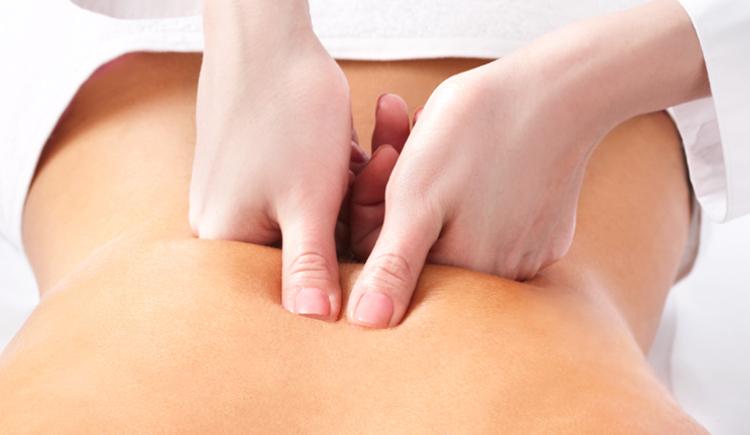Back Pain and Massage:
The chain of command
Your spine is essentially the chain that forms the ‘backbone’ of your entire body. Without it you would be a blob of muscles, organs and soft tissue piled on the floor.
Your spine commands respect because it is the pillar that supports your body, allows you to walk, stand and sit, as well as touch and feel; because it forms the canal connecting the nerves from your body and limbs, to your brain. While your heart may be the vital organ that keeps you alive, without your spine you wouldn’t be able to move.
There are three natural curves in your spine that give it an “S” shape when viewed from the side. These curves help the spine withstand great amounts of stress by distributing your body weight. Between the bony vertebra are spongy discs that act as shock absorbers. The lumbar spine (or lower back) connects the thoracic spine to the pelvis, and bears the bulk of your body’s weight.
Your spine is not rigid though. It allows movement through the intervertebral joints connecting the bony vertebra. These joints allow you to twist, to bend forward and backward, and from side to side. Large groups of muscles surrounding the spine, pelvis, hips and upper body all interact to allow for movements like walking, running, jumping, and swimming.
However, there are also muscles deep in your body that work constantly just to maintain your posture when you’re sitting and standing. It is essential that all elements of the spinal ‘chain’ work harmoniously together to ensure fluid movement without overloading structures resulting in injury and pain.
Any link in the chain that becomes ‘stuck’ will not only affect that spinal level but also the movement and strength of the chain above and below it. If the muscles around the spine are uneven in strength and length (flexibility) this too can affect the ‘chain’, altering the alignment and motion of the links.
Taking care of your spine now will help you lower the chances of experiencing back pain later. Many of the steps you can take to improve the overall health of your spine involve nothing more than practicing better body mechanics, or how you move and hold yourself, when you do daily tasks and activities.
Taking Care of Your Spine
Pay attention to early warning signs or pain. Although back pain is very common and nearly every person will experience at least one episode of back pain in a lifetime, it is essential to address any symptoms promptly.
It has also been shown in studies that early treatment and rehabilitation can prevent recurrent bouts of back pain and prevent the development of chronic lower back pain which can be very debilitating, stressful and depressing. It can affect your ability to work, play sport, socialise and sleep, all of which can further compound your pain cycle.
Your back pain could be due to inflamed ligaments, damaged intervertebral discs, nerve irritation, bony formations on the spine, muscle imbalances such as weakness or a lack of flexibility, leg length differences, or muscle strains, to name just a few. Even the way we move (or don’t move) at work, school or sport can all be an underlying cause to the current pain.
How Massage Can Help with Back Pain
A massage therapist can treat both the pain and stiffness experienced from back pain.
Massage can promote healing through increased blood circulation to the area, bringing with it oxygen and nutrients essential for tissue repair. This increased circulation also helps to reduce inflammation.
Targeted massage can release tight shortened muscles and improve flexibility and muscle balance.
At Energize Sport Massage a variety of different techniques are employed to aid recovery and reduce pain including trigger point therapy, myofascial release, deep tissue massage and kinesiology taping.
The increase in endorphin levels is one of the biggest benefits of massage. This can help relieve anxiety and depression associated with lower back pain and improve sleep, which in turn will reduce the stress of managing lower back pain.
Should you need referral to another professional your massage therapist will also be able to help with this, for example, a dietician to counsel on a meal plan to achieve a healthy body weight.
Being active can help prevent back pain and losing weight can often go a long way to relieving pain.
Chat to us today about what we can do to help.
Contact: Energize Sports massage on 07768225580
Email: emergizesportsmassage@yahoo.co.uk
Back Pain and Sleep Issues
One of the most common issues back pain sufferers experience is sleep disruption so we have put together an interactive Back Pain and Sleep Guide to help you banish those sleepless nights and wake up feeling refreshed.
The guide includes:
· 6 Strategies for Improving Your Sleep
· 8 bedtime stretches to relieve back pain (with video links)
· Sleeping positions that will help relieve pain (with links to videos)
· 7 Yoga Poses that will help cure most back pain issues
· A morning stretch routine that will help ease pain from a restless night (with videos)
Click this link to find out more and download the guide https://www.co-kinetic.com/landing/page?user_id=1577&campaign_id=720
Disclaimer: This information is intended as general guidance and information only and should not be relied upon as a basis for planning individual medical care or as a substitute for specialist medical advice in each individual case.
